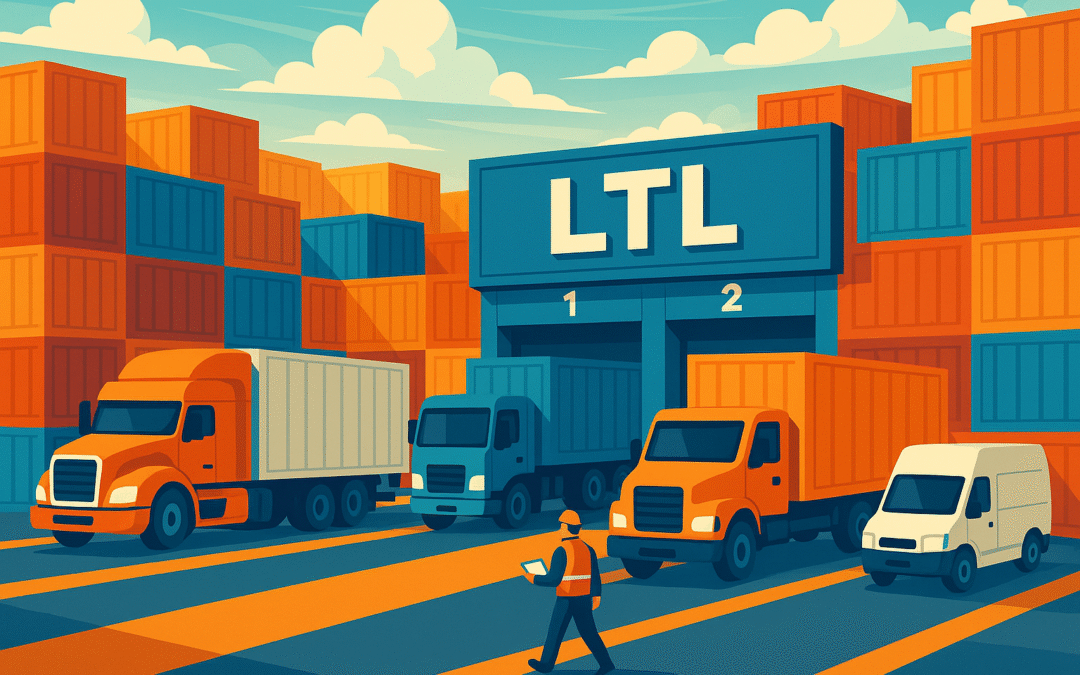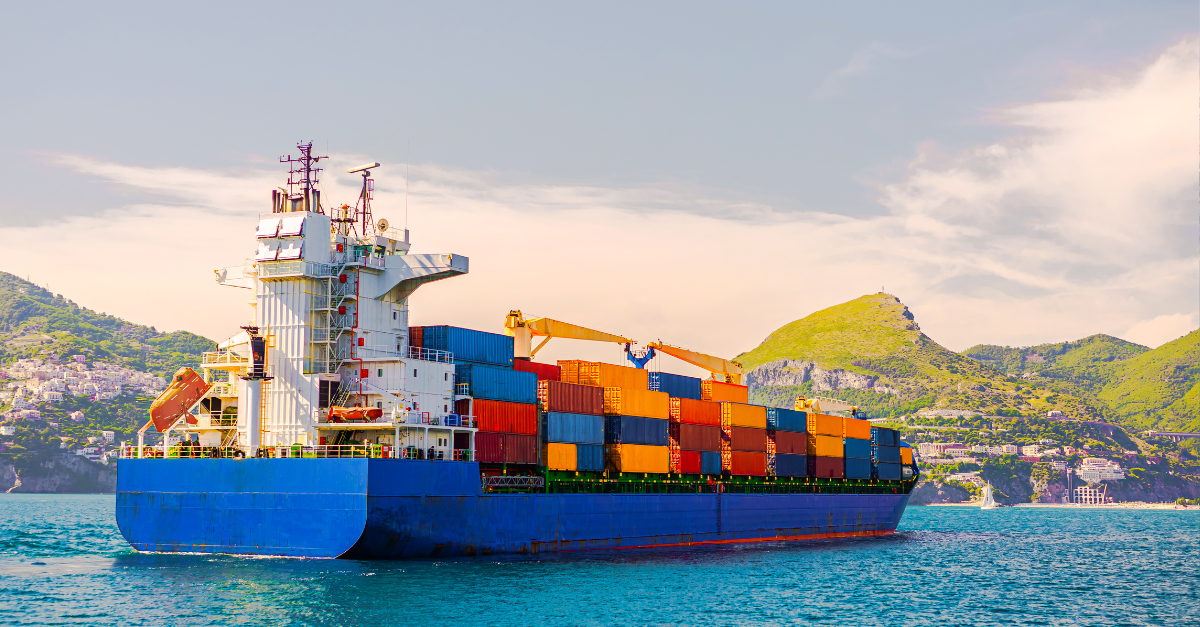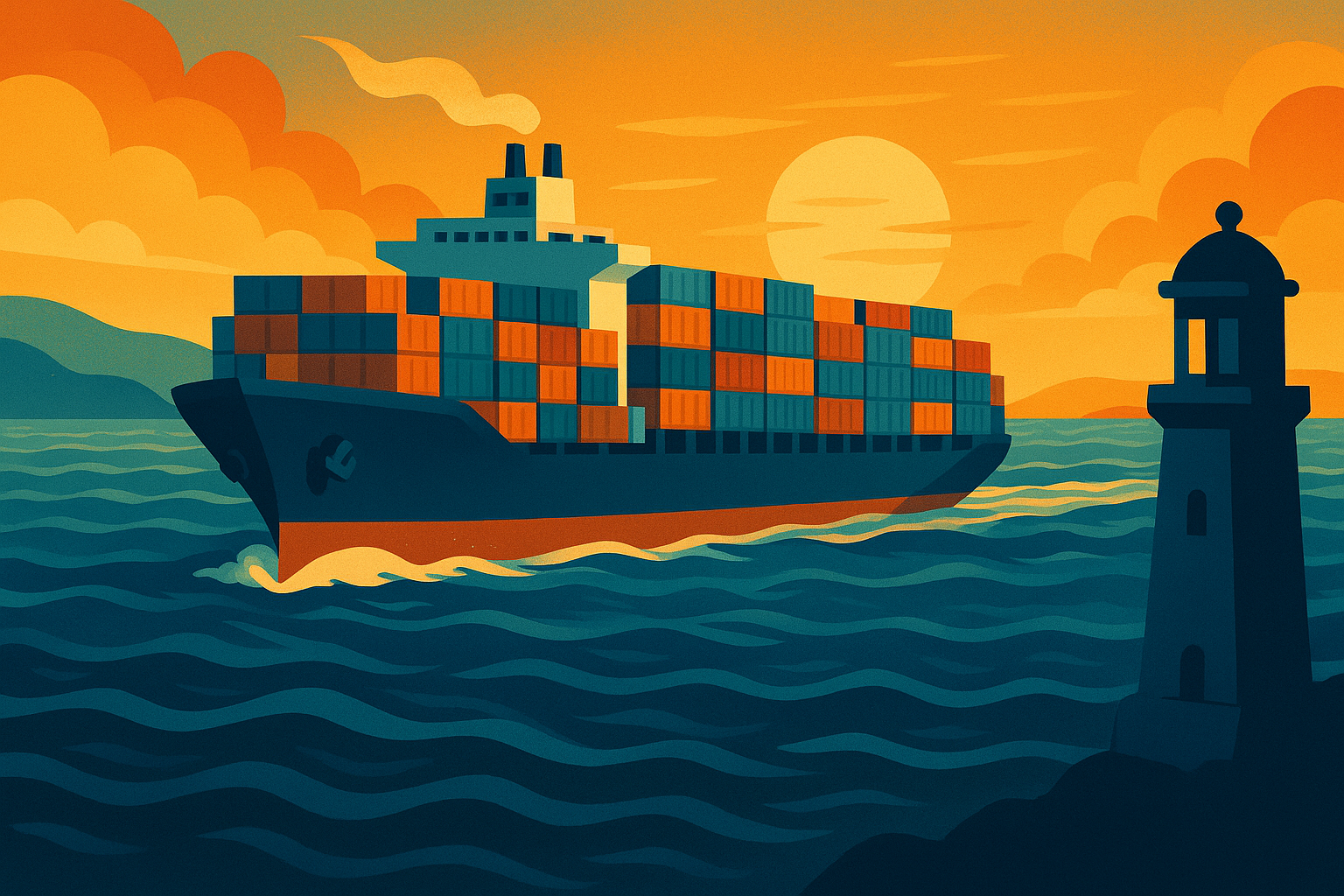This week:
- The pause on US reciprocal tariff policy effectively ends this week with new batch of import duties
- With increased tariff rates on the horizon, US importers scramble to pay the required bonds to CBP
- US trucking demand still soft, but full truckload sector and LTL carriers deploy different strategies
- Canada Post workers vote down two proposals, continuing the carrier’s prolonged labor stalemate
Pause on Country-Specific US Tariffs Set to End as Reciprocal Policy Returns
As part of its plan to end the pause on its reciprocal tariff policy, the White House will implement a new range of country-specific import duties for its trading partners this week, according to an executive order signed by US President Donald Trump last Thursday.
The order establishes rates for over 60 US trading partners, all of which take effect this Thursday, August 7. Tariffs range from 10% to 41%. The levies correspond with the rates previously established in a series of trade agreements the President has announced over the last several months. The directive also officially imposes a 25% tariff on imports from India.
Tariffs on goods from Canada, Mexico, and China will continue to be subject to separate duties, while imports from countries not named in the order will face a baseline 10% levy.
In the order, President Trump stated that while certain countries have agreed to “meaningful trade and security commitments,” others either failed to offer sufficient terms or did not engage in negotiations during the months-long pause on targeted tariffs.
Imports will begin incurring the new duties on Thursday. Goods that have already been loaded onto vessels and are in transit to US ports by then will not be subject to the tariffs, provided they are entered for consumption by October 5.
However, if US Customs and Border Protection (CBP) determines that goods were “transshipped to evade applicable duties,” the products will instead be subject to a 40% tariff in addition to other penalties and fees, according to the executive order.
US Importers Faced With Costly CBP Bond Increases to Cover New Tariffs
US importers are being compelled to significantly raise the amount of bond protection required to cover anticipated tariffs, according to recent reporting by the Journal of Commerce (JoC). Eric Johnson, senior technology editor for the JoC, spoke to multiple trade compliance experts who said these hikes are creating a major financial burden for American businesses.
CBP requires US importers to hold a bond equivalent to at least 10% of the duties they expect to pay over 12 months, with a mandated minimum coverage of $50,000 for a continuous bond. With higher tariffs on numerous US trading partners set to take effect this week, many businesses will likely have to increase their bond deposit.
However, Johnson said that satisfying the CBP bond requirements has already been troublesome for US importers, due to the rapid and unpredictable tariff hikes and pauses over the last five months. American businesses must calculate their bond coverage based on a prediction of future tariffs they will owe, a difficult task in an unstable trade environment.
“The sufficient bond amount is based on a rolling period of the prior 12 months,” Sandy Coty, director of operational development at customs broker AN Deringer, told the JoC. “Because recent months have higher duties than 12 months ago, the sum of the past 12 months is growing, and that growth is eventually causing the current bond amount to be insufficient.”
To illustrate the problem, Coty offered an example: an importer with $1 million in monthly imports at a 0% duty rate previously needed only the minimum $50,000 bond. With tariffs now ranging from 10% to 25%, the importer would quickly surpass $500,000 in paid duties, rendering their bond inadequate.
Coty added that before January, more than 90% of continuous bonds were for the $50,000 minimum.
Subscribe to JMR’s Weekly Supply Chain Roundup!
Stay informed with the latest supply chain news, trends, and insights. Get it delivered directly to your inbox every week.
A Market Divided: Truckload Companies Cut Costs, LTL Carriers Expand Networks
The US trucking industry is dealing with prolonged soft freight demand with two distinct strategies. According to reports published by the JoC last week, excess capacity in the truckload sector is forcing carriers to aggressively cut costs and shed assets. Meanwhile, the less-than-truckload (LTL) market is seeing carriers expand their networks and invest in faster service to prepare for an eventual market upswing.
Despite some low single-digit gains in contract rates, the truckload market remains firmly in shippers’ favor due to the capacity glut. This has prompted large carriers to continue their cost-cutting initiatives, which are expected to extend into 2026. As proof of this trend, the JoC Truckload Capacity Index — which measures truck counts at large publicly traded carriers — has dropped from a peak of 93.2 in Q2 2022 to 74.9 in Q1 2025.
Volatile trade policy has further complicated the market by altering freight patterns. According to the Global Port Tracker, US port imports declined 11.8% from April to May and were down 6.4% year-over-year.
In response to new tariffs taking effect in August, however, a 14.6% surge in containerized imports was forecasted for July as shippers pulled freight forward. This frontloading created a temporary rush followed by softness, particularly on the West Coast, forcing truckload carriers to reposition their assets to follow the demand.
Meanwhile, LTL carriers are pursuing aggressive expansion, according to William B. Cassidy, a senior editor for the JoC. Industry observers say the expansion strategy continues the LTL sector’s realignment that began following Yellow’s bankruptcy two years ago, with carriers bringing previously Yellow-owned facilities back online.
These investments in network growth are occurring despite ongoing weak freight volumes. Old Dominion Freight Line (ODFL), the second-largest LTL carrier, reported a 7.3% year-over-year drop in daily shipments for the second quarter. Meanwhile, XPO’s daily shipment count decreased by 5.1% to 50,782 during the same period.
According to Cassidy, LTL carriers are investing now to capture market share and prepare for a market rebound. Total LTL capacity is estimated to be at 95% of what it was before Yellow’s collapse, setting the stage for a potentially tight market when demand returns.
Canada Post Labor Stalemate Continues as Workers Reject Contract Offers
Labor uncertainty at Canada Post, the nation’s government-owned parcel carrier, will continue after employees represented by the Canadian Union of Postal Workers (CUPW) overwhelmingly rejected two multi-year contract proposals last Friday.
The vote extends an already prolonged and disruptive negotiation period that has impacted postal service across Canada.
During a government-ordered voting process held from July 21 to August 1, postal workers cast their ballots on what Canada Post had termed its “final offers.” Separate contracts for urban employees and rural/suburban mail carriers were each rejected by nearly 70% of the union membership.
The rejected deals proposed a 13.59% compounded wage increase over four years for more than 53,000 employees. Canada Post’s proposals also included operational changes, such as the introduction of a weekend-focused delivery workforce. CUPW had countered with demands for a 19% pay increase over the same period, and that weekend shifts be assigned to current postal workers.
The ongoing saga, which has included a previous peak-season strike, has prompted many shippers to divert their packages to private carriers such as FedEx and UPS. The Canadian Federation of Independent Business and other groups have warned that the instability is causing Canada Post’s small business customers to leave the carrier for good.






